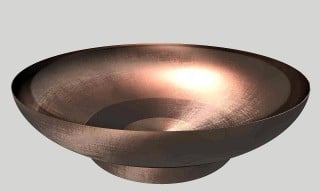

Contents
Guidelines for processing martensitic stainless steel
Martensitic stainless steels are among the hardest, but at the same time also the lightest and cheapest metals of this type. However, the processing of these is different hard steels quite complex so far, which is why their use is limited to only a few industries.
However, that could soon change. A research group from Texas A&M University, in cooperation with a US Air Force laboratory, has now found out how high-carbon steel can be processed error-free into stable objects of different shapes using 3D printing.
Common to most hard and durable steels, suitable for a variety of applications, is that they are quite expensive. In contrast, martensitic stainless steels are extremely inexpensive, according to Ibrahim Karaman, professor and director of the Materials Science department at Texas A&M University.
Until now, these steels could only be used for complex structures in components that were extremely hard and lightweight. So far, areas of application have primarily been aerospace, the military and the automotive sector.
Action framework for simplified steel 3D printing
However, the researchers working with Karaman have now developed a framework that simplifies the 3D printing of even daring geometries with hard steel so much that this process could also become attractive for a large number of industries.
Optimization of the manufacturing process
Steels are cast from iron and a variety of other elements including carbon. In order to harden steel, extremely high temperatures are first required, followed by rapid cooling. In the process, carbon atoms are fused with iron crystals to form a stable lattice. This is how martensitic steels are formed.
Before that, however, martensitic steels must be built up and shaped according to the intended application. This process is roughly comparable to the layered construction of metal layers in 3D printing.
However, the process of forming objects from martensitic steel often produces errors that weaken the object’s stability.
Porosity as a weak point
The main problem is mostly porous spots along thin holes, which weaken the hardness of the object, even if the starting material is very hard.
To avoid exactly these mistakes, Karaman and his team have thoroughly examined steel 3D printing to create an easy-to-use guide.
